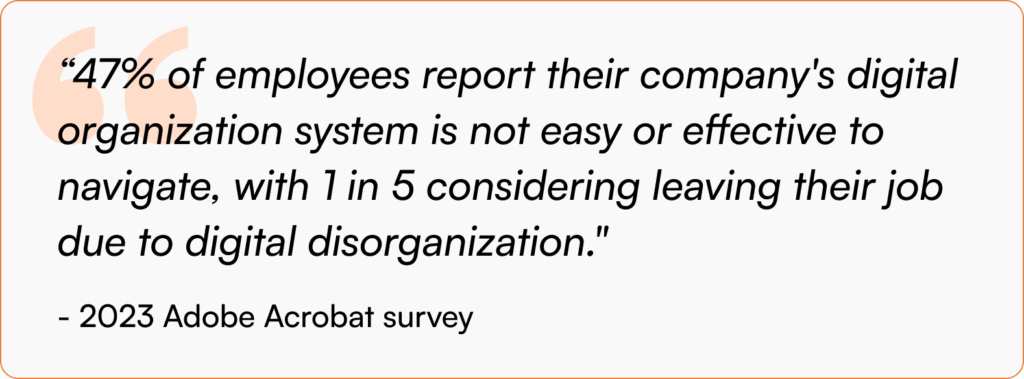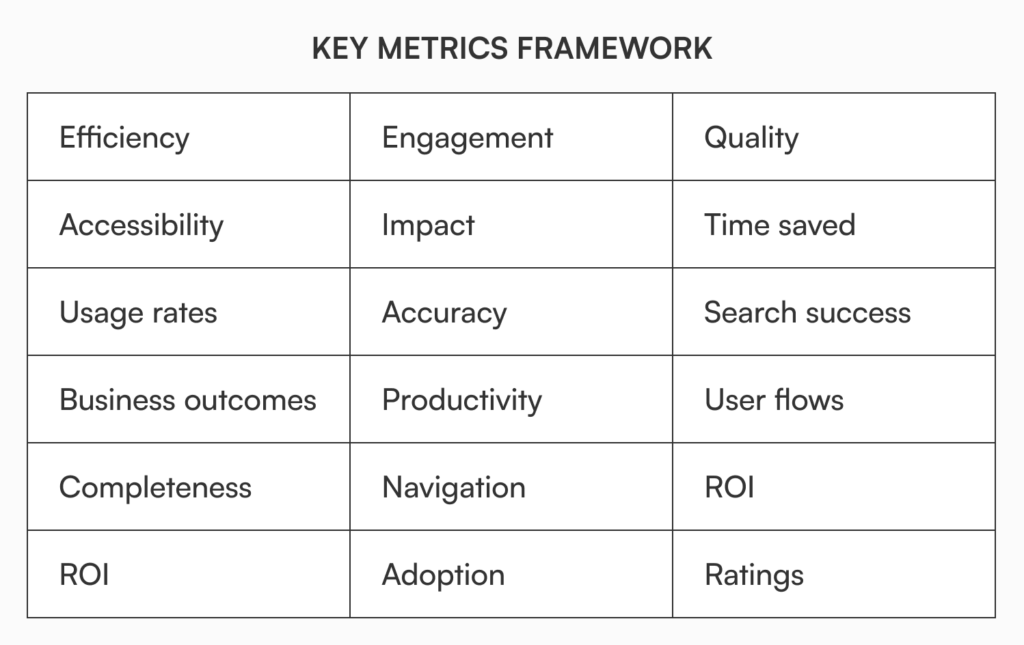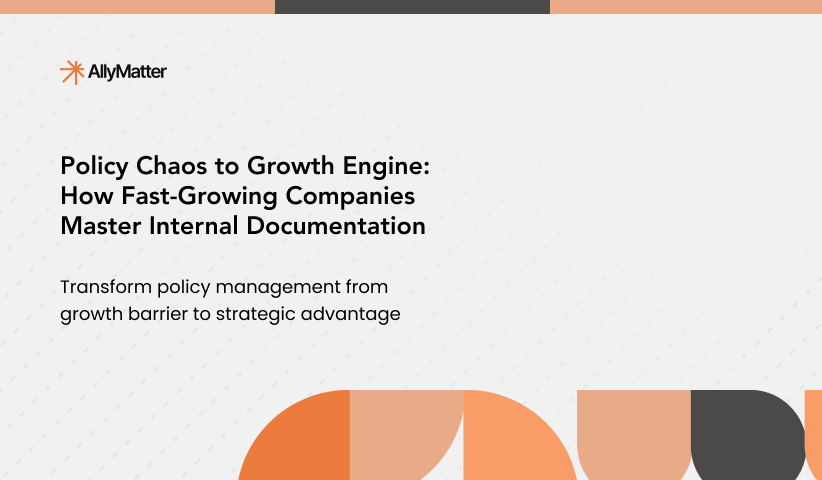Imagine your company just implemented a beautiful new internal knowledge base. The design is clean, the categories make sense, and everyone seems excited about it. Six months later, usage has plummeted, information is outdated, and employees are back to sending “quick question” messages instead of finding answers themselves.
What went wrong?
The answer often lies not in the platform itself but in how we measure, or fail to measure, its effectiveness. Most organizations invest heavily in documentation but treat measurement as an afterthought, relying on basic page views or occasional feedback rather than strategic metrics.

When we measure what matters, we transform documentation from a static repository into a living, evolving asset that drives real business value. Let’s explore why this matters and how to do it effectively.
Why measuring internal documentation matters to the C-suite
For executives navigating complex business environments, internal documentation might seem like a tactical concern rather than a strategic priority. However, properly measured knowledge management directly impacts core business outcomes:
- Operational efficiency: When employees can find information quickly, they spend less time searching and more time executing. A properly measured internal knowledge base reduces redundant questions, eliminates repetitive explanations, and streamlines onboarding.
- Risk mitigation: Unmeasured documentation creates dangerous blind spots. Are critical procedures being followed? Is compliance information up-to-date? Without proper metrics, you’re essentially flying blind on crucial governance issues.
- Innovation acceleration: Organizations where knowledge flows freely innovate faster. Measurement helps identify which information enables innovation and where knowledge silos might be stifling growth.
- Employee experience: Consider a new team member trying to navigate company processes. With effective documentation measurement, you can identify and fix gaps before they create frustration. This directly impacts retention, especially important when 20% of employees consider leaving due to digital disorganization.
For the C-suite, the question isn’t whether to measure documentation effectiveness but how to transform those measurements into strategic insights that drive organizational performance.
Five key metrics that drive documentation ROI
Rather than drowning in data, focus on these five categories of metrics that provide actionable insights:
Efficiency metrics: Time saved and accelerated productivity
Track how quickly employees find information and how this translates to productivity gains. For example, measure the average time to complete common processes before and after documentation improvements.
Engagement metrics: Adoption and usage patterns
Monitor which documents get used most frequently, by whom, and when. Look for patterns that reveal:
- High-value content that should be expanded
- Underutilized resources that might need promotion or revision
- Departmental differences in adoption
Suppose your sales team heavily uses product documentation while customer service rarely accesses it. This might indicate an opportunity to better tailor resources to different team needs.
Quality metrics: Accuracy, completeness, and relevance
Track:
- How often documents require updates or corrections
- User ratings or feedback on helpfulness
- Error rates in processes linked to specific documentation
For example, an IT department might correlate fewer support tickets with improved technical documentation, demonstrating direct quality improvements.
Accessibility metrics: Findability and search effectiveness
Monitor:
- Search abandonment rates
- Failed searches
- Navigation paths
- Time to locate specific information
These metrics reveal whether your organization system actually works for users. When employees struggle with integrating documents across multiple platforms, measuring accessibility becomes crucial.
Impact metrics: Correlation with business outcomes
Connect documentation effectiveness to strategic business metrics like:
- Reduced errors in regulated processes
- Faster time-to-market for new initiatives
- Improved compliance outcomes
- Enhanced customer satisfaction
For instance, a healthcare organization might track how improvements in clinical documentation correlate with reduced treatment delays or improved patient outcomes.

Creating a metrics framework that drives continuous improvement
Establishing meaningful measurements isn’t about collecting data for its own sake; it’s about creating a feedback loop that continuously improves your knowledge ecosystem.
Start with clear objectives
Before measuring anything, ask: “What business outcomes are we trying to improve through better documentation?” These might include reducing support costs, accelerating onboarding, or ensuring regulatory compliance.
Establish baselines and benchmarks
You can’t improve what you don’t measure first. Document the current state before making changes:
- How long does it take new employees to become productive?
- How many internal questions get repeated?
- What’s the current error rate in key processes?
Connect metrics to specific use cases
Rather than measuring everything, focus on key user journeys. For example, track how quickly a new sales representative can find pricing information or how efficiently a service technician can access troubleshooting procedures.
Implement regular review cycles
Schedule quarterly reviews of your metrics to identify:
- Areas showing improvement
- Documentation that needs refreshing
- New knowledge gaps emerging
Balance quantitative and qualitative data
While numbers tell part of the story, don’t neglect qualitative feedback. Regular surveys and focus groups provide context that pure metrics might miss.
Common pitfalls in documentation measurement (and how to avoid them)
Even well-intentioned measurement efforts can go astray. Watch for these common traps:
Focusing on vanity metrics
Page views might look impressive in reports but tell you little about actual effectiveness. Instead, measure outcomes: Did the documentation help solve a problem? Did it reduce support tickets? Did it accelerate decision-making?
Collecting data without acting on insights
There’s no point in measuring if you won’t use the data to drive improvements. Establish clear processes for turning measurement insights into documentation updates.
Failing to close the feedback loop
When users provide feedback about documentation, acknowledge it and act on it. Nothing kills engagement faster than feeling ignored after offering suggestions.
Measuring too much or too little
Focus on a manageable set of meaningful metrics rather than trying to track everything or settling for basic usage statistics alone.

Implementation roadmap: Getting started with documentation metrics
Here’s a practical roadmap to measure internal documentation:
Quick wins for immediate visibility
- Implement basic user feedback mechanisms (simple ratings, quick surveys)
- Set up basic analytics on your knowledge platform
- Identify 3-5 key documents to pilot enhanced measurement
Build your metrics dashboard
- Create a simple executive dashboard showing key metrics
- Establish baseline measurements for critical documentation
- Conduct initial user interviews to identify pain points
Create a culture of measurement
- Train content owners on using metrics to improve their documentation
- Implement regular review cycles
- Begin correlating documentation metrics with business outcomes
Optimize and scale
- Expand measurement across all critical documentation
- Implement more sophisticated analytics
- Begin predictive analysis to identify potential knowledge gaps before they become problems
Consider the implementation roadmap below:
- If your team is under 50 people → Start with basic feedback and usage metrics
- If your team is 50-200 people → Add engagement analytics and quality tracking
- If your team is 200+ people → Implement full metrics dashboard with business correlation
How AllyMatter transforms documentation measurement
AllyMatter’s knowledge management platform is specifically designed to provide meaningful metrics that drive continuous improvement. Our comprehensive audit trail and version tracking capabilities give you visibility into every document change, while robust analytics help you understand how your team uses information.
With AllyMatter’s intelligent tagging and metadata search, you can quickly identify which departments and teams are effectively utilizing your knowledge base and where adoption needs improvement. Our detailed user engagement analytics connect directly to business outcomes, helping you demonstrate the ROI of your documentation investment.
The platform’s granular access control and role-based permissions ensure you can measure adoption across different departments and user types. With built-in document signatures and approval workflows, you can track compliance-related metrics that matter to leadership. The platform’s smart search functionality provides detailed analytics on search success rates and user navigation patterns, giving you the data needed to continuously optimize your knowledge ecosystem.
Taking the next step: From measurement to mastery
Effective measurement transforms internal documentation from a necessary expense into a strategic asset that drives organizational performance. By focusing on the right metrics, establishing clear baselines, and creating continuous feedback loops, your knowledge base becomes more than just a repository; it becomes a competitive advantage.
The organizations that thrive in complex environments aren’t necessarily those with the most documentation, but those that most effectively measure, refine, and optimize their knowledge sharing. When you properly measure what matters, you create a culture where information flows freely, problems get solved faster, and teams operate with greater alignment.
Ready to see how proper measurement can transform your documentation strategy? Join the AllyMatter waitlist.
Frequently asked questions
What’s the difference between documentation metrics and vanity metrics?
Documentation metrics focus on outcomes like problem resolution time, error reduction, and productivity gains. Vanity metrics like page views look impressive but don’t indicate whether documentation actually helps users accomplish their goals or solve business problems.
How often should we review our documentation metrics?
Implement quarterly reviews for strategic assessment, monthly reviews for content quality, and weekly monitoring of usage patterns. This balance ensures you catch issues early while avoiding analysis paralysis that can slow down content improvements.
Which metrics should we prioritize if we’re just starting?
Begin with efficiency metrics (time to find information) and engagement metrics (which documents get used most). These provide immediate insights into user behavior and can quickly identify high-impact improvement opportunities without overwhelming your team.
How do we connect documentation metrics to business ROI?
Track correlation between documentation improvements and business outcomes like reduced support tickets, faster onboarding, decreased error rates, or improved compliance scores. Measure before-and-after states when implementing documentation changes to demonstrate direct impact.


